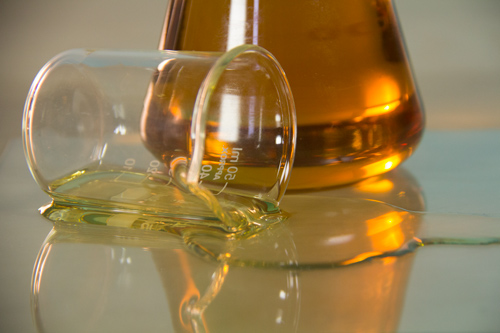 You’ll have to excuse my shade of indigo. I’m not sure if it’s more Smurf or Na’vi, but back when I first started writing about fluid power, I promised I’d talk about fluid conditioning until I’m blue in the face. I’ll live with the odd skin tone, because fluid conditioning is still one of the most important topics related to hydraulic system maintenance. If your hydraulic fluid isn’t well maintained, your hydraulic system is doomed for failure.
You’ll have to excuse my shade of indigo. I’m not sure if it’s more Smurf or Na’vi, but back when I first started writing about fluid power, I promised I’d talk about fluid conditioning until I’m blue in the face. I’ll live with the odd skin tone, because fluid conditioning is still one of the most important topics related to hydraulic system maintenance. If your hydraulic fluid isn’t well maintained, your hydraulic system is doomed for failure.
Fluid conditioning is the process of ensuring your force transfer medium (aka, liquid) is kept clean, cool and dry. Each set of criteria is a critical consideration, and if left unmediated, they will cause their own set of unique problems for you and your hydraulic machine. This week I will discuss particle contamination, and how it should be prevented.
Dirty fluid is any oil, coolant or other exotic liquid that is contaminated with particles of metal, sand or even plastics. Although little damage or wear will occur when bits of floating Teflon break loose in your hydraulic system, they can block pilot passages, reducing hydraulic performance or preventing some operations altogether. This is why it’s important to consider that hydraulic contamination can be sourced from inside the machine, and not just when crud from your dirty mitts falls into the reservoir when you top up the oil.
Regardless if contamination comes from within or without, I’ve still yet to see a hydraulic system with too much filtration. I will give a nod of approval if you even went so far as to install a kidney loop filter on your log splitter. Hey, guys put dubs on their ’98 Jimmy, why not put a Hydac OLF on your ’08 NorthStar 37 ton?
Ideally, a hydraulic system will have a return filter to protect your system from junk coming back from the circuit, a pressure filter to protect your system from junk being pumped out to the circuit, and then an off-line filter system to remove the junk missed by the other two. The off-line filter is often the finest, typically as low as 3µm absolute. A low micron off-line filter allows a more moderate filtration quality in locations where flow should not be impeded, such as with pressure and return filters, as finer filtration produces more pressure drop.
One place a filter is no longer recommended is in the suction line of the pump. They provide so little useful advantage, and are more likely to get clogged and starve the pump than anything. It’s best just to avoid them altogether unless there is a critical design reason for them, like I don’t know, an open reservoir in a windy desert? Even then I’d skip it and just install a big ol’ gear pump that doesn’t mind grinding up some silica.
Part 2 will talk about the ins and outs of keeping your hydraulic system cool, and also discuss the useful locations for hydraulic coolers. Until then, you stay classy San Diego.
![]()


